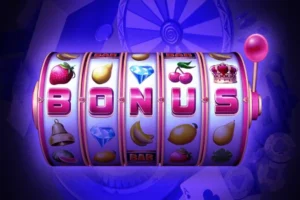How craps became the newest, most popular casino game


Craps has been getting a lot more attention lately, and it’s not just nostalgia speaking. It’s the combined effect of record U.S. gaming growth and easier ways to learn and play, both on property and online in regulated states. This article looks at how access widened the funnel, why the numbers still put blackjack on top and what would actually make craps a first choice for more players in the months ahead.
Dice on easy mode
The recent bump in craps’ visibility starts with access, most clearly with the arrival of live‑dealer online craps in U.S. jurisdictions where iGaming is regulated, bringing authentic dice outcomes together with on‑screen guidance that lowers the learning curve. The rollout of Live Craps to states (including Michigan) gave curious players a way to learn in a controlled environment that feels like the real table, which matters when the etiquette and pace can intimidate first‑timers.
Pair that with a national market that set new commercial revenue highs and you get conditions where new games and formats can find an audience faster than before.
That access point is the on‑ramp to adoption, and it’s worth treating it like a deliberate funnel, from curiosity to comfort to repeat play. A practical idea is to keep low minimums during designated learning windows and surface clear in‑product prompts about the safest bets so a player’s first roll feels structured, not chaotic. If access is the new entry, the next question is how craps actually stacks up by the numbers against table staples like blackjack.
Ledgers by blackjack
By revenue and table count, blackjack still leads, while craps thrives on social energy and has more variance in monthly results due to its higher typical hold. In Nevada’s 2024 statewide results, craps recorded 450.664 million dollars in win across 326 tables with a 16.35 percent hold, while blackjack posted 1.339802 billion dollars across 2,015 tables with a 14.25 percent hold, a gap that reflects both footprint and sustained demand. On the Las Vegas Strip in 2024, craps win was 331.213 million dollars across 182 tables, compared with roulette at 358.696 million dollars and baccarat at 1.363467 billion dollars, which shows craps is strong but not the top‑earning table on the marquee corridor.
So why does craps feel so popular at the rail, especially on a hot roll? If you expand “popular” beyond gross win to include social density, rail engagement and first‑time adoption enabled by online entry points, craps often outperforms in vibe and community even if the ledgers still favor blackjack. UNLV’s long‑run analysis shows craps’ average monthly hold sits in the mid‑teens, and Nevada’s 2024 annual craps hold was roughly 16.34 percent, which means monthly spikes can be dramatic without signaling a lasting change in market share.
Measure what matters to players, not just totals, then align the product to the ways newcomers actually learn. The next step is operational. Scale availability, smooth friction and put education where the decision happens.
From hot roll to first choice
If you want craps to be a first choice, treat it like the most social table that’s also the easiest table to start, which means more low‑minimum windows, hybrid or stadium options where appropriate and guided experiences in regulated online states. The backdrop is favorable. The AGA’s tracker shows the commercial market hitting records into 2025, and table games are growing alongside iGaming, which gives operators room to experiment with formats that convert curiosity into time on felt. You can also see resilience in the monthly data. Nevada’s craps win in August 2025 hit 37.638 million dollars, up 12.51 percent year over year with a 15.42 percent hold, which is the kind of pulse that can be nurtured with better onboarding.
And because scope matters, keep expectations realistic about category size while you optimize the path for new players. In Q1 2024, U.S. table games produced 2.58 billion dollars while slots generated 8.86 billion dollars, so “winning” here is about share shifts over time, not flipping the market in a quarter. For players and properties, the most useful moves are the simplest ones done consistently.
- Start with pass line, take maximum odds when bankroll allows, and avoid high‑vig one‑roll bets until you know the math, that aligns experience with the game’s best edges and reduces noise.
- Choose licensed platforms in regulated states if you play online, then lean on built‑in tutorials or live‑dealer guidance to practice cadence and etiquette before your next trip.
- If live craps is available in your state, use the guided features to learn bet placement and timing so the first in‑person session feels familiar, not foreign.
What happens if success is measured by first‑time conversion and dwell time rather than annual win alone, you might fund the very tweaks that move craps from crowd‑pleaser to category contender. As those tweaks scale, the leaderboard can shift quietly, which is usually how lasting change happens in casinos.
Roll the future, not the dice
Craps has grown because access improved and learning got friendlier, and in a record‑setting U.S. market that’s exactly how new cohorts get built, even if the hard numbers still crown blackjack. The practical path forward is clear. Keep lowering friction where players enter, keep clarifying low‑edge bets where decisions happen and let volatility average out as cohorts mature. If you try the game with structure, whether on a legal live‑dealer app or at a casino that leans into teaching moments, you’ll find the rhythm that keeps people cheering in unison and coming back for more.
Grow access, teach the odds and celebrate the table’s social core, because those are the levers that turn a hot roll into sustained momentum. Given the choice to try or wait, what’s stopping you from taking the dice on your terms this time?







